
Loop Back: Lutefisk Processing
 The Kildall Fish Company of Minneapolis billed itself as the “world’s largest ludefisk producers.” (Today, the word is more commonly spelled lutefisk).
The Kildall Fish Company of Minneapolis billed itself as the “world’s largest ludefisk producers.” (Today, the word is more commonly spelled lutefisk).
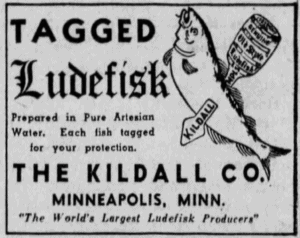
Founded by Norwegian immigrant Joseph Kildall, the company imported mass quantities of dried whitefish, hauled in from the icy fjords of Lofoten, Norway. By sea, lake, river and rail, the shipments arrived at 5th and Washington Avenues North. Workers would then soak the fish in large concrete tanks of artesian well water to get them soft and plump again for church suppers and family gatherings.

1936 photo: Hennepin Co Library
Before it was packaged, each piece of fish would be pierced with a mini harpoon with Kildall’s copyrighted barrel trademark on it, which the company said was “your guarantee that it’s Genuine Old Style.”
The plant was also used to process “Smorgos-Sill,’ or spiced herring. A 1939 newspaper article showed several women around a table with names like Odergaard, Olson, Gustafson and Gunderson, packing the herring “with spices from the far corners of the world—cloves from Madagascar and Zanzibar, cinnamon from China, celery seed from France and bay leaves from Jugoslavia (sic).”
The writer marveled at the fact that Minnesotans could be eating these fish less than a month after they were caught in Norway.
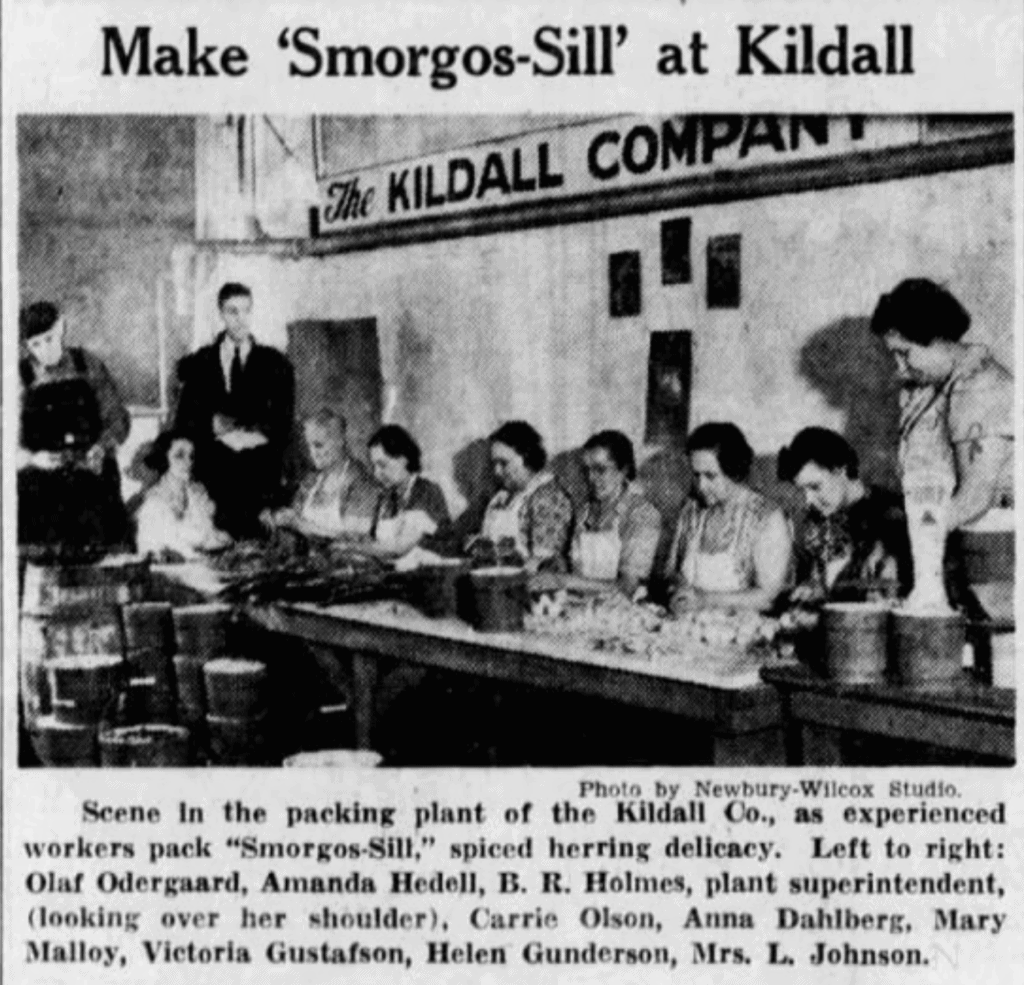
1939 newspaper photo
Kildall also distributed a spearmint-flavored cod liver oil—“tonic with a pleasant taste” according to a newspaper ad.
The company had an aggressive marketing strategy, buying newspaper and radio ads, and even producing a short film that played in theaters, documenting the process from the time the fish were caught in Norway to their arrival in Minneapolis. Kildall also hosted radio programs on WTCN-AM in the 1930s.
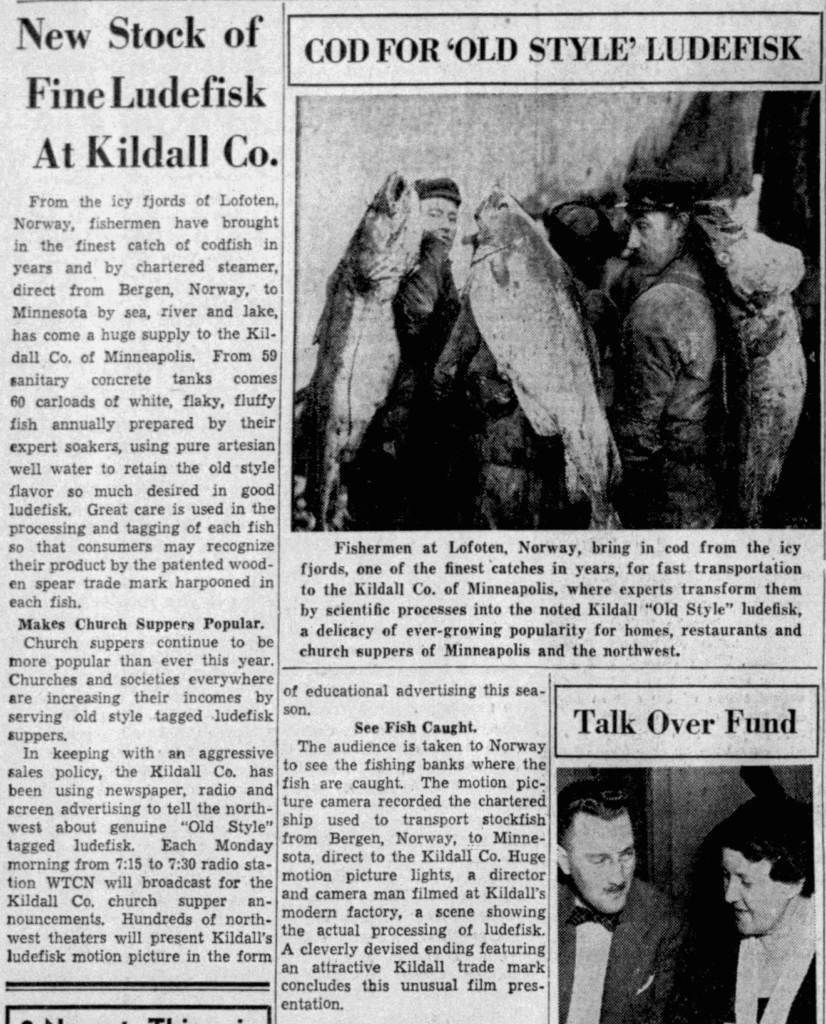
1937 Minneapolis Tribune
This facility was built in 1914 with a third story added in 1965.
Please visit the Historic North Loop section of this website for many more fun photos and articles about our neighborhood’s history.
By Mike Binkley, North Loop volunteer*
(*not an actual historian; I just pulled together information from newspaper archives, public records, online searches and most helpfully, the digital archives at the Hennepin County Library)

1941 photo of Kildall sign at 5th and Washington. Credit: Hennepin County Library
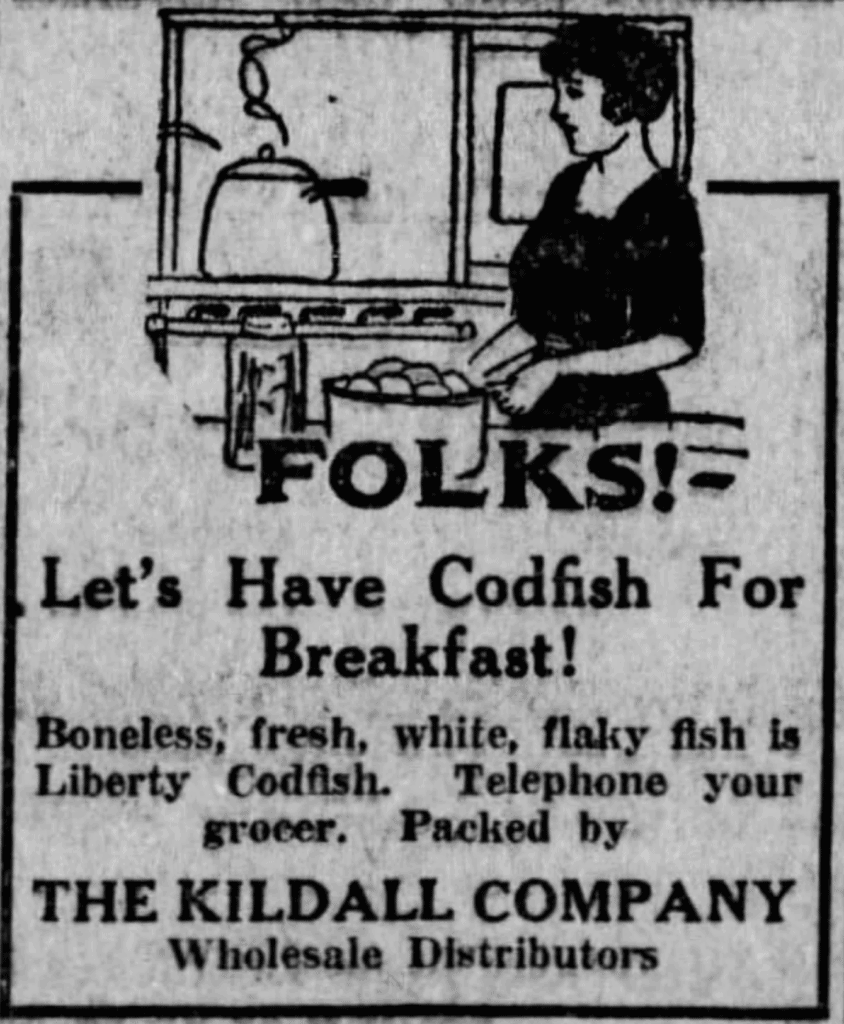
1923 newspaper ad
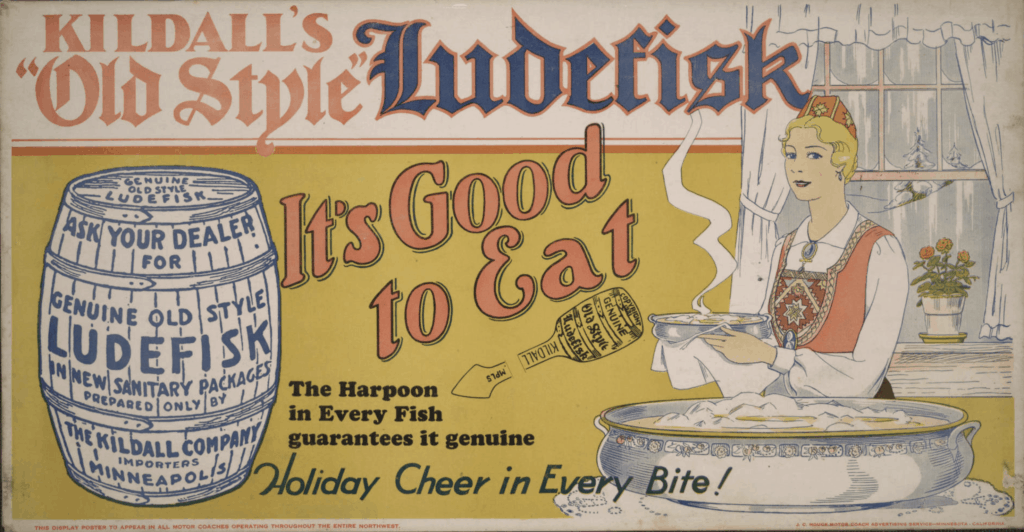
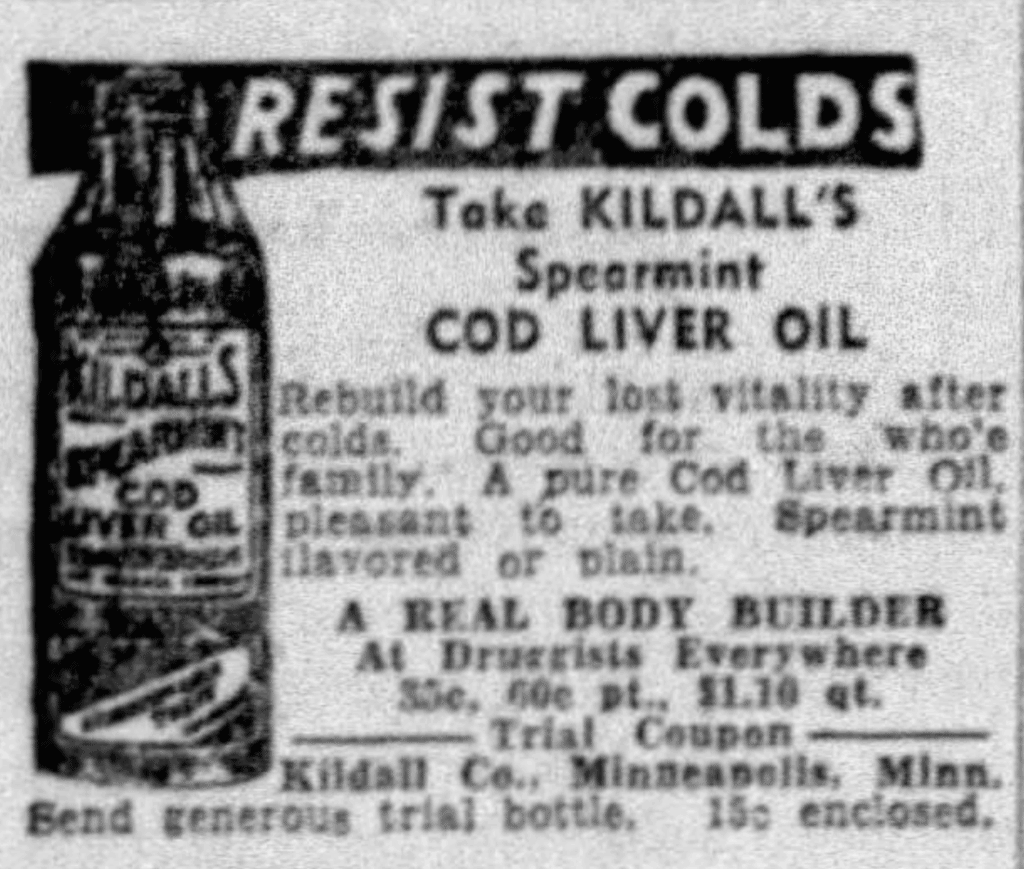
1937 newspaper ad

